An Identity Management Nightmare - Part 1 of 3
This blog also published on medium.

Introduction from Cirrus Identity CEO, Dedra Chamberlin
High School students and their families across the country are getting responses back from college applications. This is a milestone, but still just the middle of the arduous process of applying to college, choosing a school, and enrolling in classes. One of the most frustrating parts of the process is the the need to create up to 5-10 new user accounts for various online services.
Most college students have numerous social identities before they even begin to apply to college - Google, Instagram, Facebook, LinkedIn, etc. Wouldn’t it be great if they could leverage those identities when checking out colleges and submitting applications?
Cirrus Identity's solutions supports the use of existing identities when applying to college. Our goal is to eliminate the frustrating mess of usernames and passwords from the already daunting task of college application. That way, families get some time back to enjoy each other’s company before college begins. You can learn more at our website.
Last summer, we were fortunate enough to have a high school senior, Kaia Brem, intern for us. We asked her to write a three part blog series to help illustrate how painful college application is from a digital identity management perspective.
Part I (below) covers the actual application process, and all the various testing agencies and college admissions sites where she had to create new usernames and passwords.
Parts II and III will cover acceptance and admission.
Kaia's College Application Story - Part I
Hello, there!Allow me to introduce myself: my name is Kaia, I am 17, and like many others at this time of year, I am eagerly awaiting responses from colleges where I applied.
As an intern at Cirrus Identity last summer, I was asked to share my story of applying to college from a digital identity perspective, and I started keeping track of the new accounts I had to create when I completed my applications.
Students dread the college application process from the beginning of high school. Stories are passed down year to year, student to student, of the hectic application season. The tests, the essays, the recommendations, the application form itself, not to mention all of the things throughout the other years: the AP classes, the AP tests, the extracurriculars, and the clubs. The idea of sitting down and beginning to conquer this mountain of accounts and forms and fees -- it’s enough to give anyone a migraine.
There are new accounts required for applications, and also the testing services. It started as early as Sophomore year...
Account #1
The stress of applying to college begins two years before you apply, during sophomore year. This is when scores for the PSAT are released and thousands of students around the country sign up for an account with College Board. This is a website that they will become very familiar with in the following years. College Board is an organization that prepares and administers standardized tests, such as the PSAT/NMSQT, the SAT, and the various AP tests, all used in the college application process. They also provide many resources for finding colleges to apply to, and statistics that must be considered during the process of applying. Most of this information can be accessed without an account, so parents may research schools as well. However, students must have an account in order to view their test scores and send the results to the colleges that interest them. A College Board account is also useful to ensure that students are on the right track for college depending on their position in high school, as well as to find, keep track of, and contact colleges.
In order to do this, simply do a quick search for ‘College Board’ on Google, and go to the College Board homepage. In the box on the left is the button to sign up. When you click on that, you must identify your status as a student, and then this page appears:
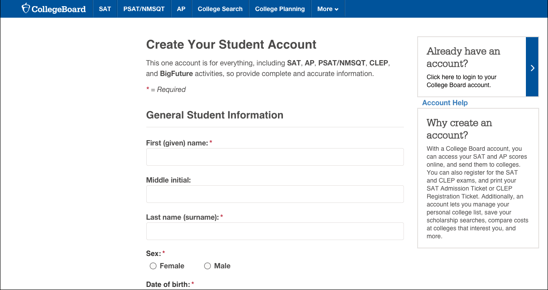
College Board has users submit general personal information, in addition to information about their parent or guardian so that students and their families can be as informed as possible about applying to college.
The next steps in the application process are the SAT and the AP tests. Most students take the SAT during junior year, or the beginning of senior, while the AP tests always fall during May, at the end of the AP classes. The SAT is one of the standardized tests required by colleges for admittance. Like the PSAT, the SAT is administered through the College Board, so there is no need to re-create an account. However, the registration process requires much of the information submitted during the setup of the original College Board account. This process is repetitive, you’d best to get used to it.Account #2
Around the same time as the SAT is another test called the ACT. This test is through a completely different organization called simply ACT. This test and the SAT are slightly different, but both are considered by colleges for acceptance. Registering for this test requires setting up another account.
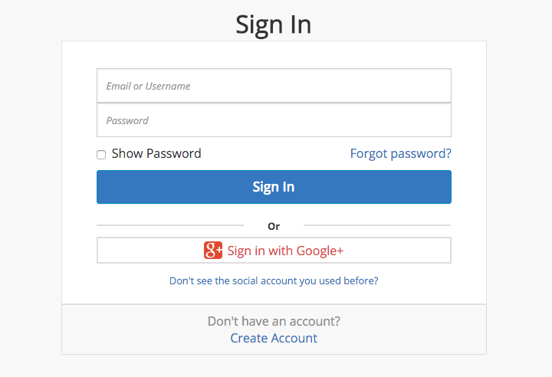
For the purpose of this article, I used an alias named Lucy Lenticular so that I could better showcase the application process.
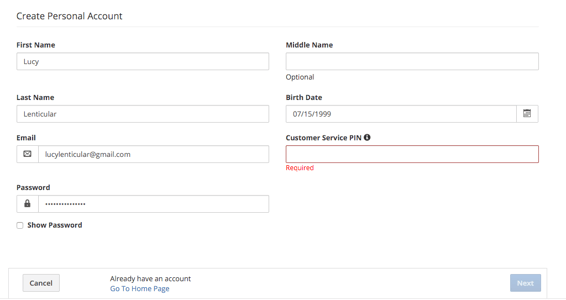
Account #3
Once you have completed the standardized testing and received your scores, you can begin applying to colleges. Many colleges in the US use what is called the Common Application. This tool is very simple, and it diminishes an enormous amount of stress from the application process. It is a general application form in which you submit information about GPA, extracurriculars, family life, and more. In addition, you submit a written essay portion combined with individual supplemental portions for each college.
Surprise, surprise: registering for this service requires setting up an additional account.

This is the home page. Once you click on the green ‘Create Account’ button, you must identify yourself as a ‘Student,’ then you may begin setting up your account. You begin by creating yet another username and password:
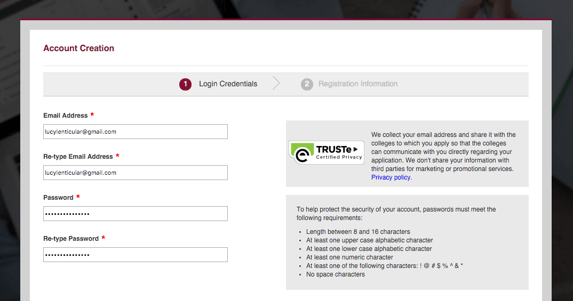
Then you have to provide some user information:
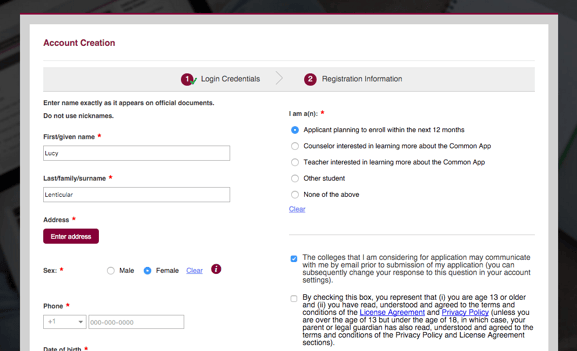
And now you're set up to login in to the CommonApp:
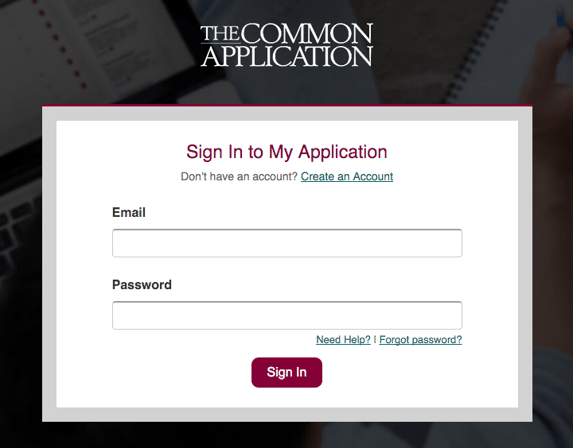
You can then select which colleges you intend to apply to, and the college - with all of it’s information - will appear on the dashboard.
Account #4
The Common Application is very convenient for students, however not every college has implemented it. The University of California is a system of nine prestigious colleges on the West Coast. This system uses their own application process.
You start by (you guessed it), creating an account:
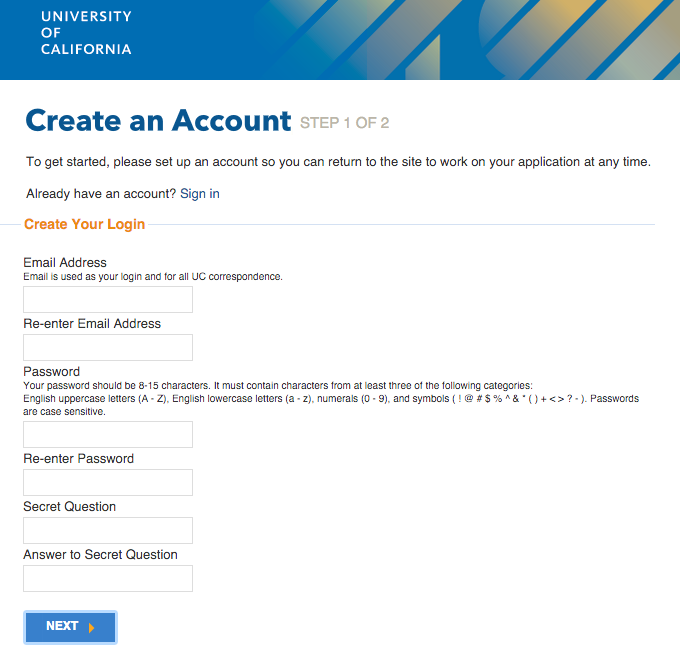
After clicking "create account", you must create a new username and password:
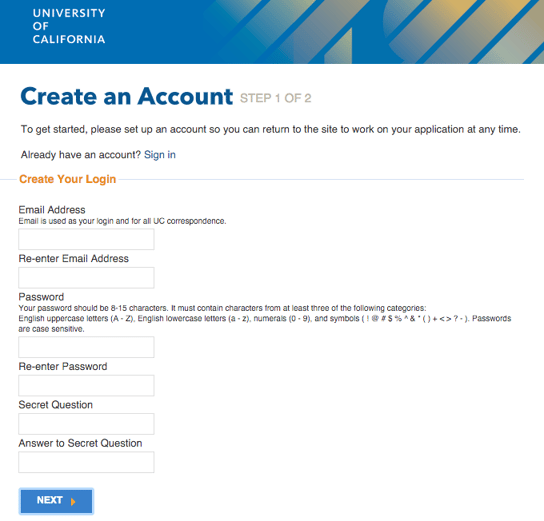
And then you have to enter some basic information to register:
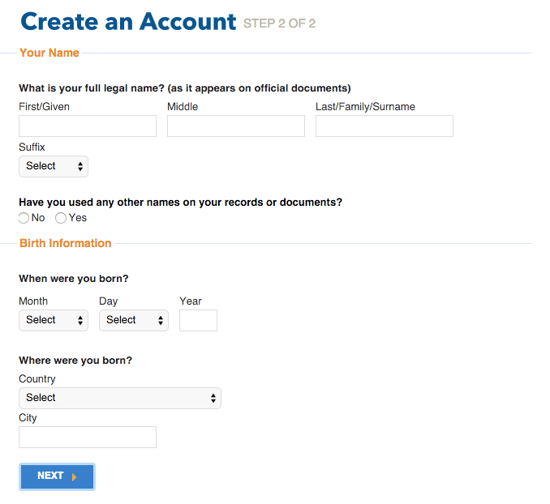
With one more user account down, you can now apply to UC schools.
Account #5
The California State University is another system of colleges that use a completely separate application process.
It starts like the other systems with a "create account" button:
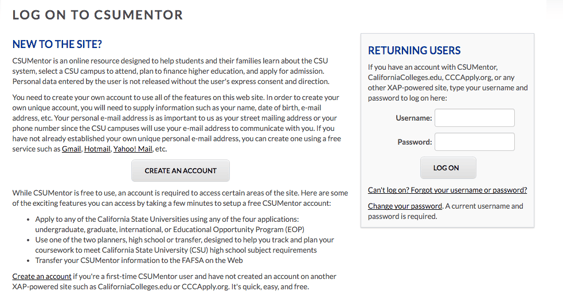
Next is adding some contact information:
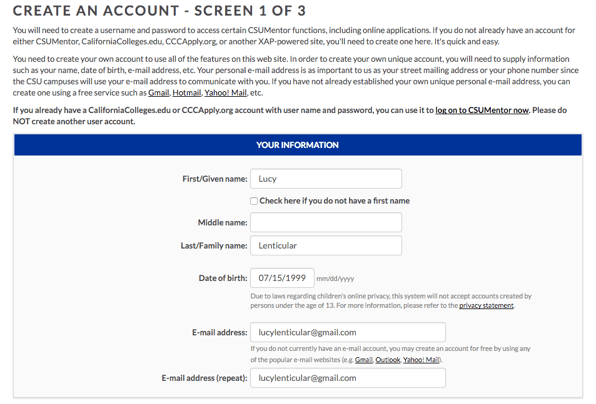
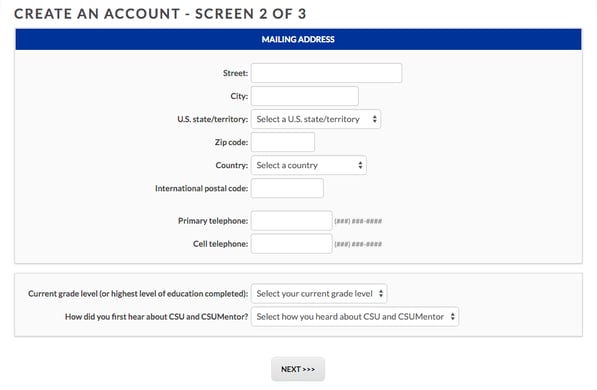
And finally creating another username and password:
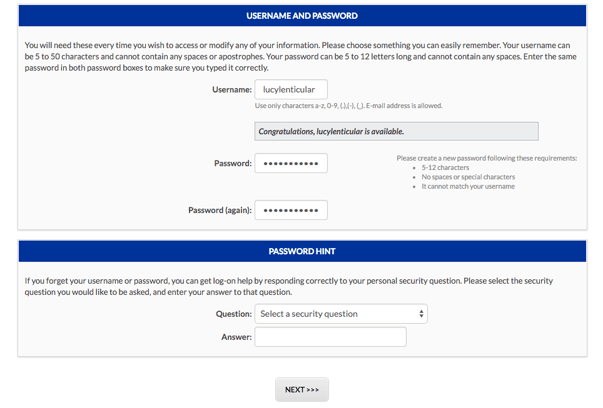
The digital identity managment mess is time-consuming and very frustrating.
There are over four thousand colleges and universities in the United States. Only about 700 of these use the Common Application. Most use an application process unique to their university. MIT, for example, despite its prestigious status and 18,000+ applications every year, forces its applicants to deal with yet another system. Most students apply to at least eight schools, some as many as eighteen.
In a way, I am fortunate that out of this daunting number of schools, I only have to consider three different application systems. For many, the number is much higher. All of these services are necessary to apply to college. As you may have noticed, they all require much of the same information. It can get exhausting, going through these same forms over and over again. It would have been great if I could have used the Cirrus Identity Gateway Service and chosen one of my existing social identities when I was applying, or used the Cirrus Identity Invitation Service to sponsor access for my parents so they could review the process and pay fees. As acceptance to good colleges gets more and more competitive, the expectations put on high school seniors increases.
Note: The second part in this three part series will be published later this Spring, when Kaia gets her acceptance letters and begins creating accounts at her potential new schools. We will publish Part III once she decides where to attend.
